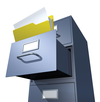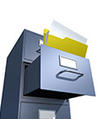« Previous 1 2 3
Managing Linux Filesystems
Rank and File
Imagine a filesystem as a library that stores data efficiently and in a structured way. Without filesystems, persistent data would not be possible. Virtually every Linux system has at least one block-based filesystem (e.g., ext4, XFS, Btrfs). Block-based means that an underlying physical data store is involved, such as a hard drive, solid-state drive (SSD), or SD card. Linux has a number of filesystems from which to choose, and the ext2/3/4 series is likely known by everyone. If you work with a current distribution, you have probably met other filesystems, too (Table 1).
Table 1
Standard Filesystems
| Distribution | Filesystem |
|---|---|
| Debian (from v7.0 wheezy) | ext4 |
| Ubuntu (from v9.04) | ext4 |
| Fedora (from v22) | XFS |
| SLES (from v12) | Btrfs for the root partition, XFS for data partitions |
| RHEL 7 | XFS |
Most filesystems are very similar and differ only in detail. The following terms will help you understand them:
- Superblock: Stores metadata about a filesystem, such as the total number of blocks
Buy ADMIN Magazine
Subscribe to our ADMIN Newsletters
Subscribe to our Linux Newsletters
Find Linux and Open Source Jobs
Most Popular
Support Our Work
ADMIN content is made possible with support from readers like you. Please consider contributing when you've found an article to be beneficial.







